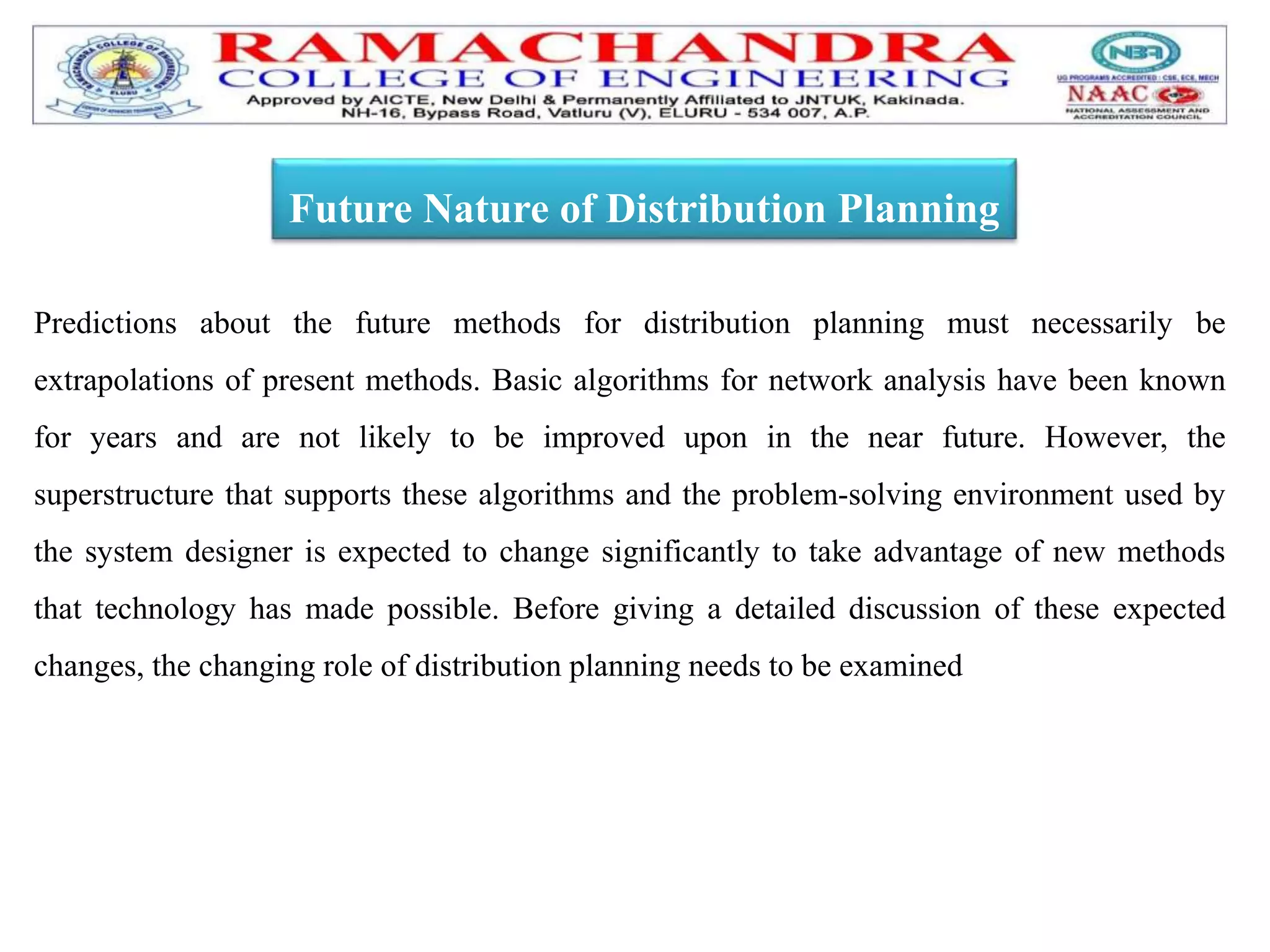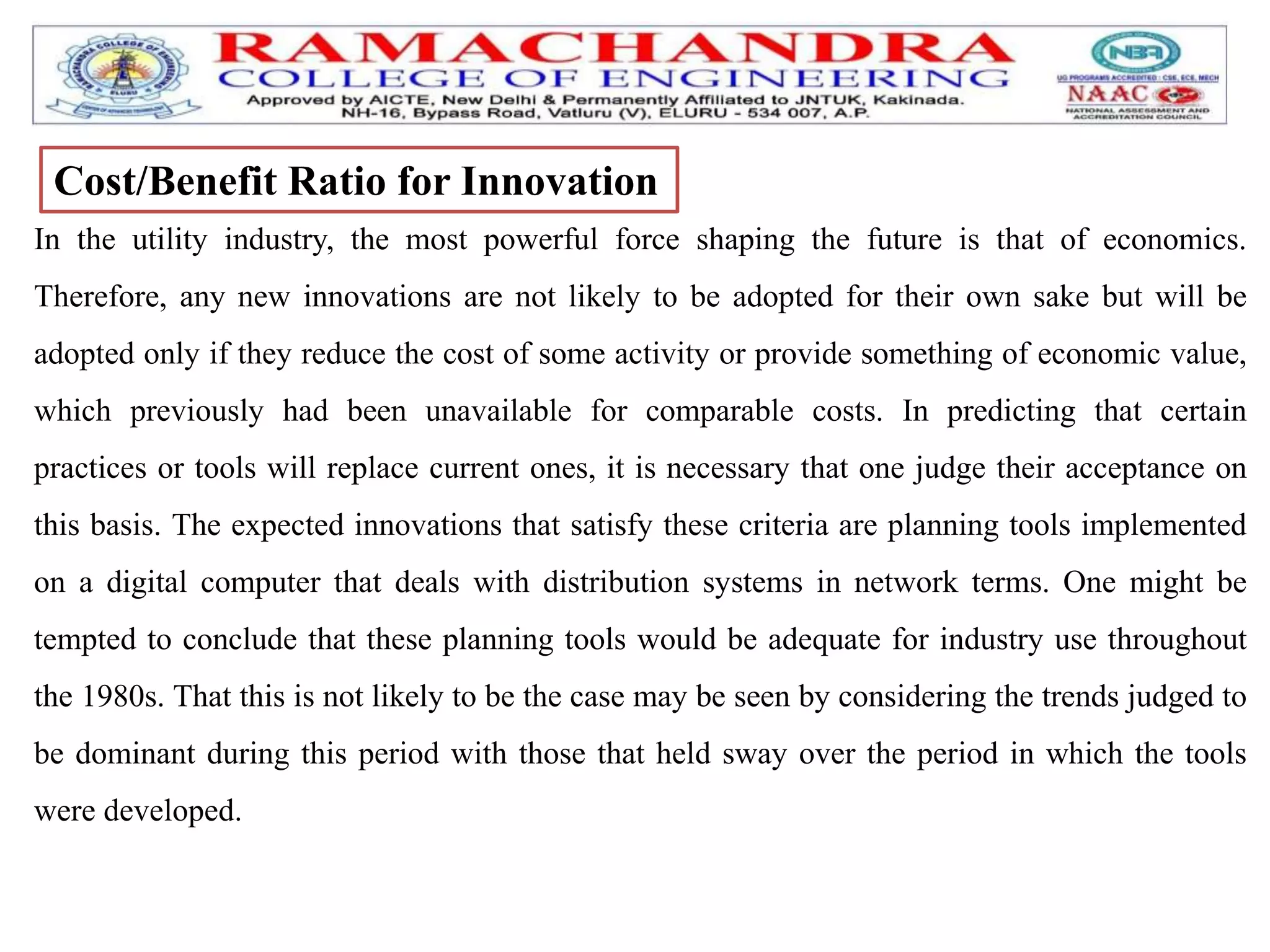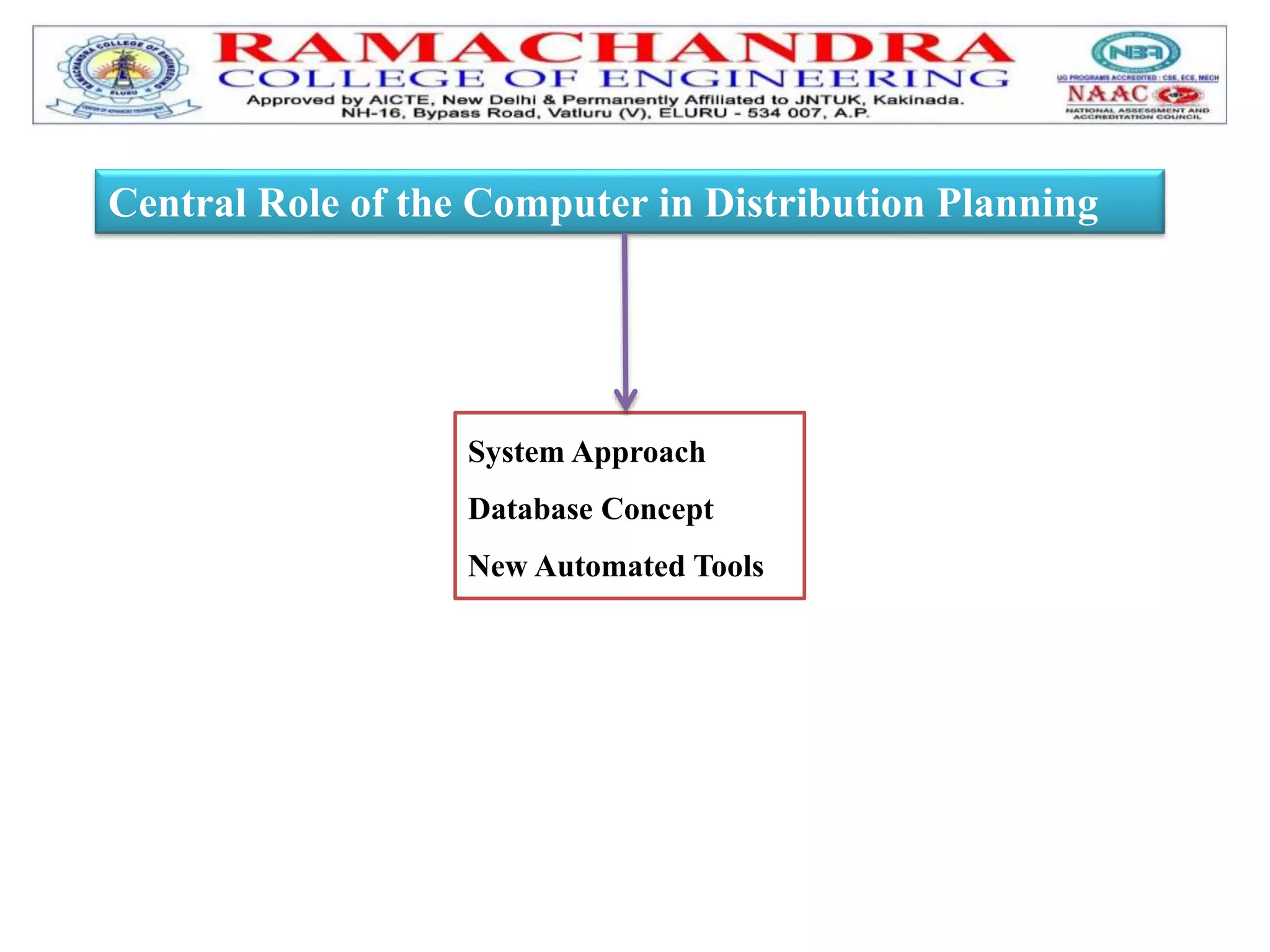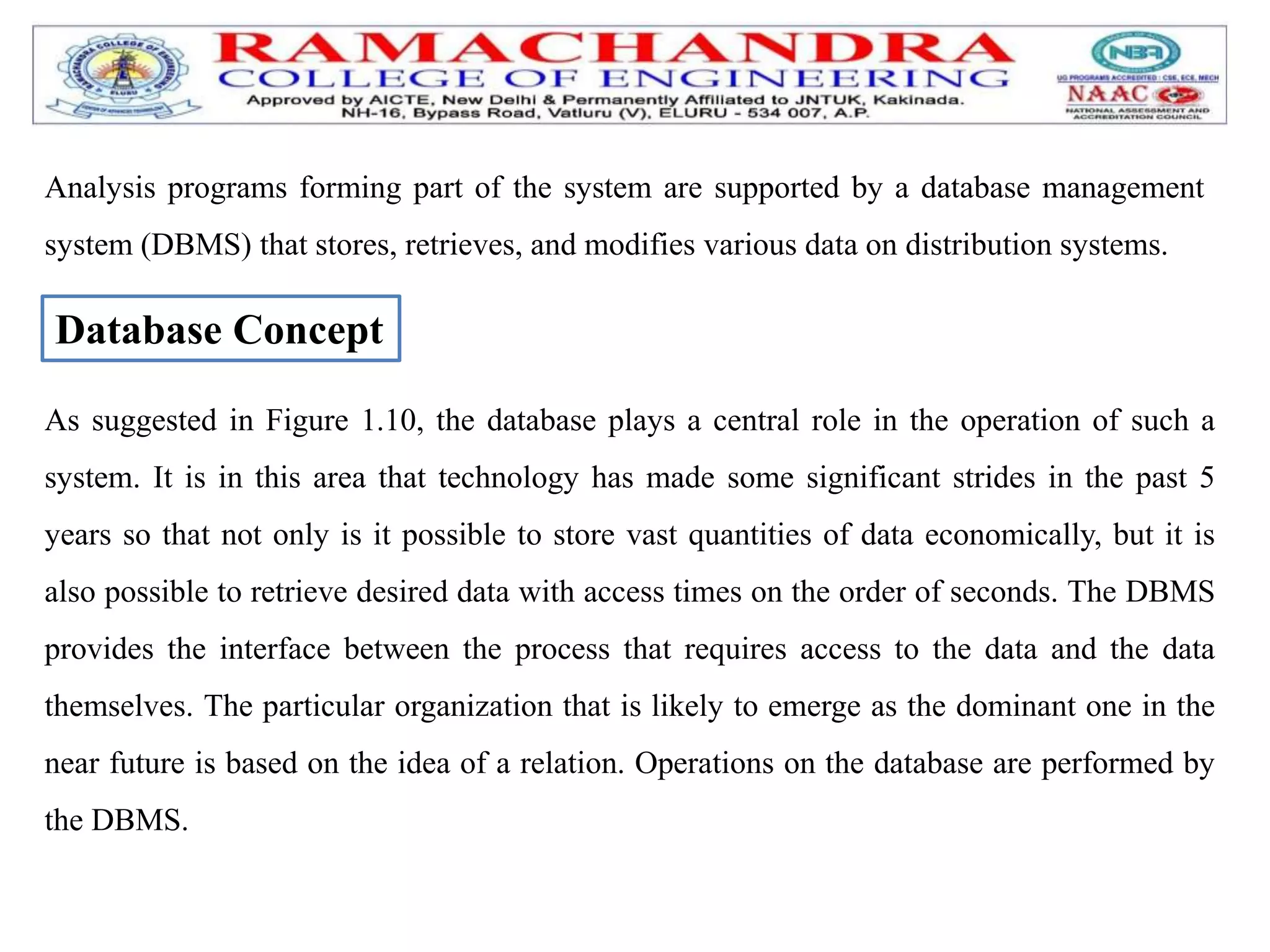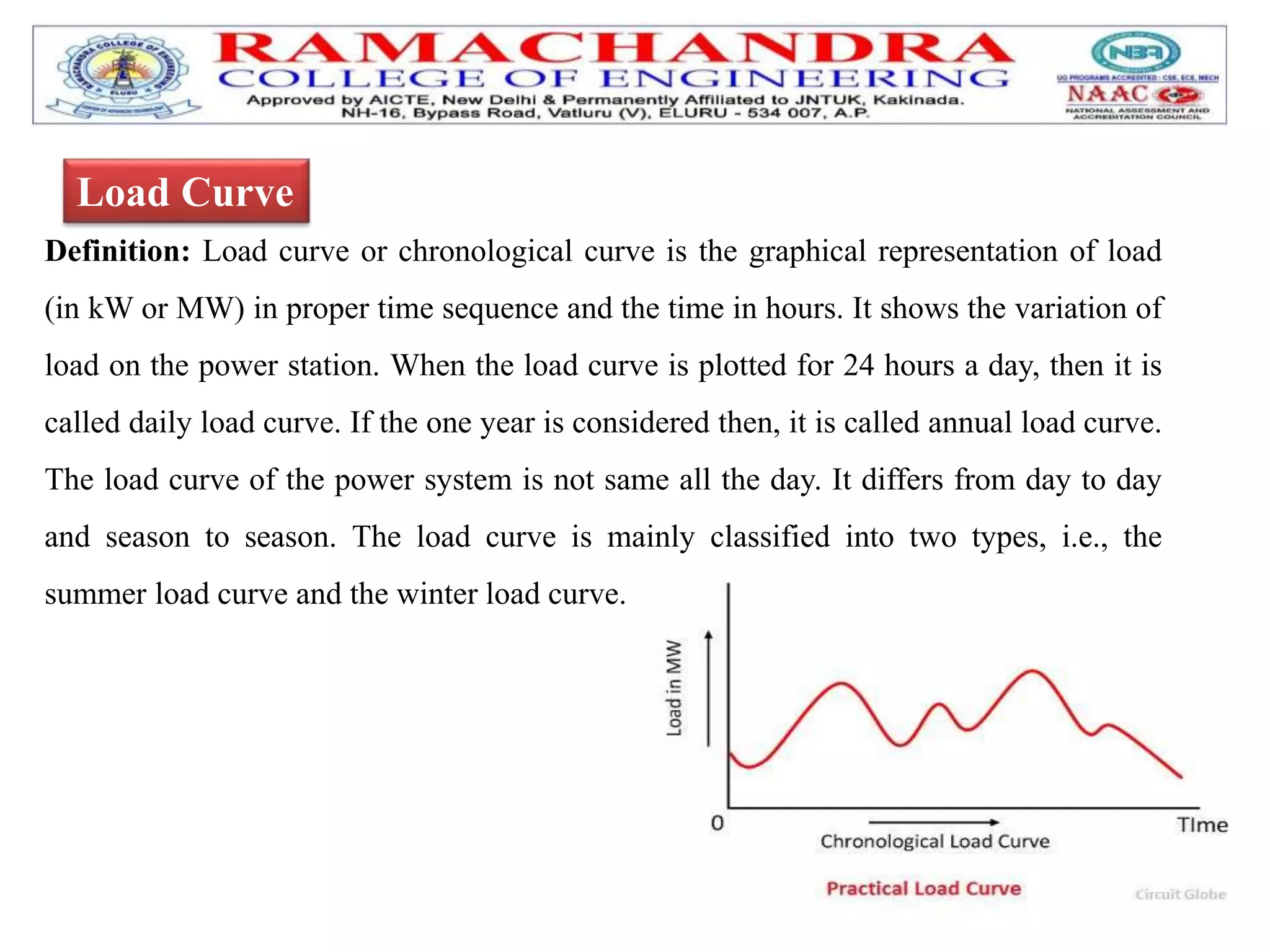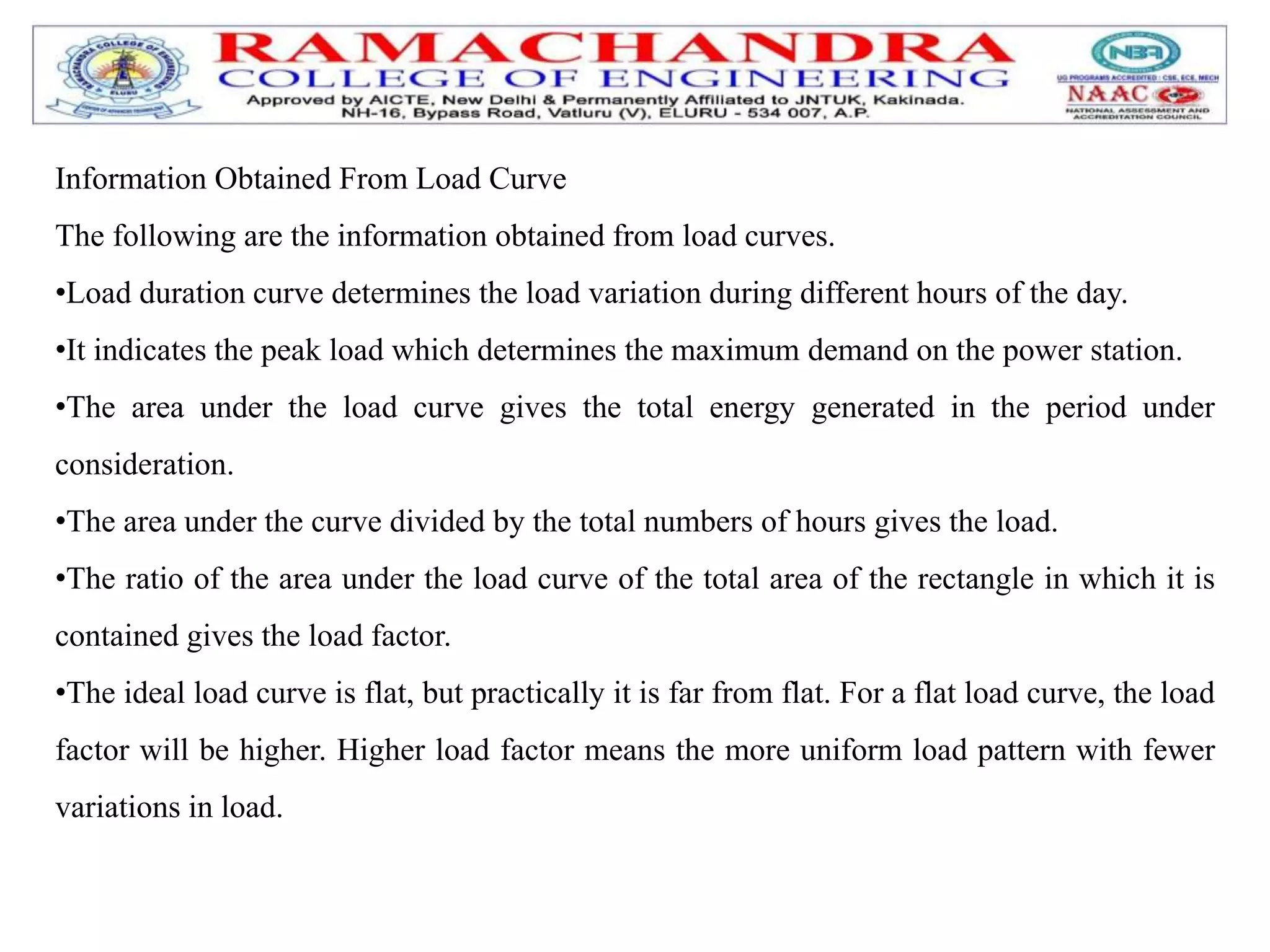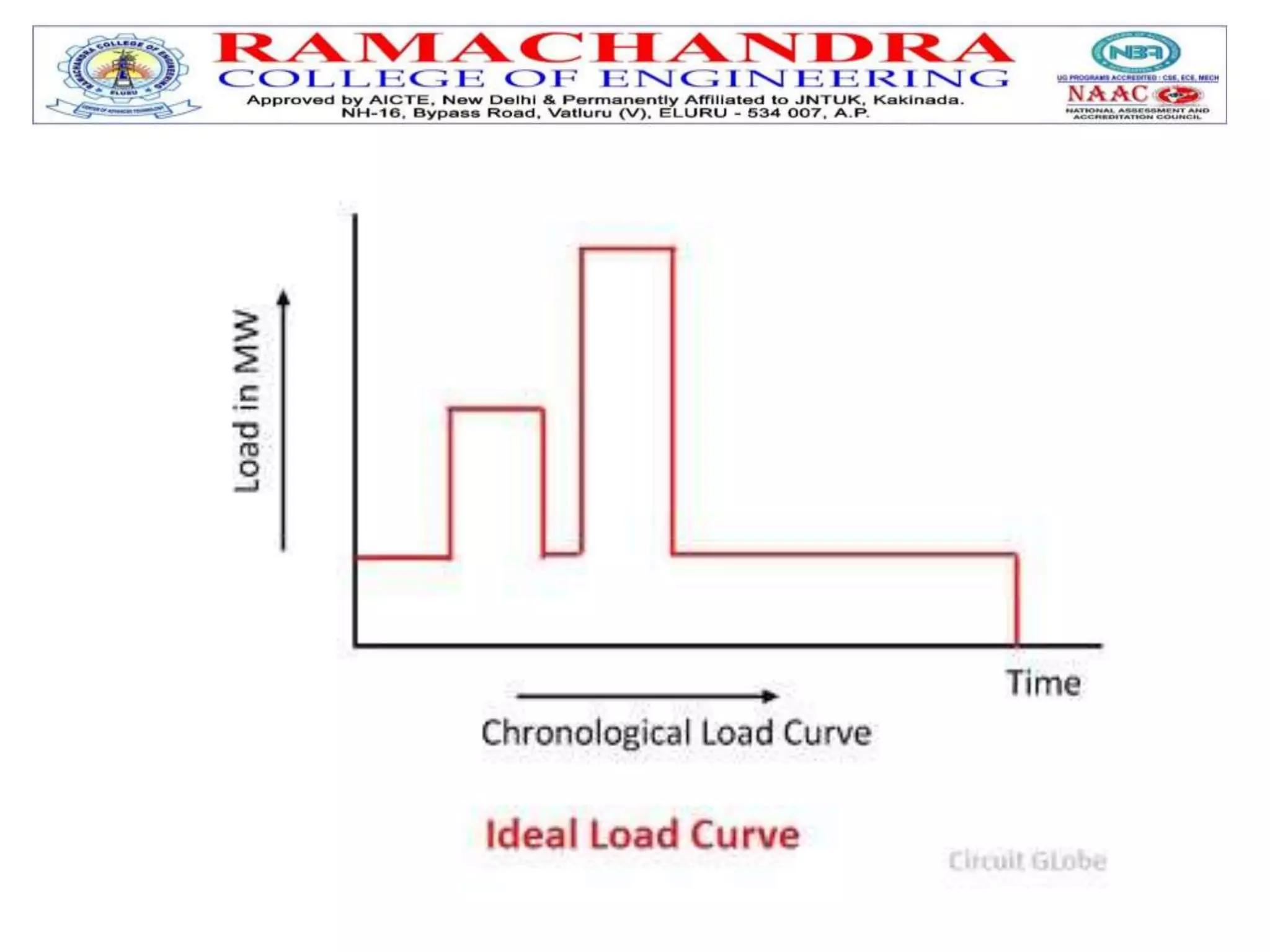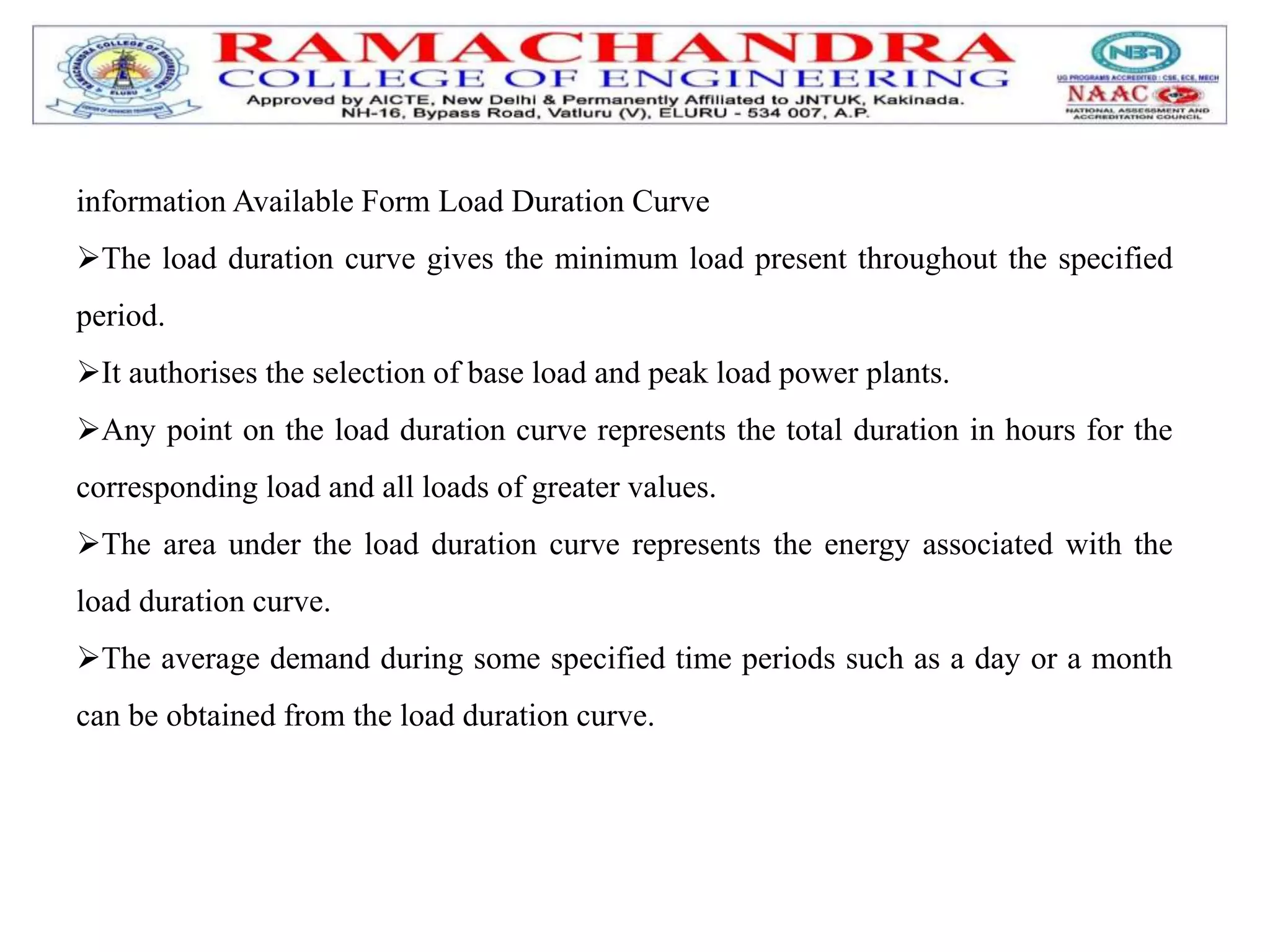This document discusses future trends in electrical distribution system planning. It predicts that distribution planning will rely heavily on computer tools to optimize network design based on multiple criteria. Load management will also impact distribution by altering load patterns, requiring systems to be designed differently. New automated tools like network editors are expected to enable trial network designs that can be simulated to ensure performance and accommodate load growth. The central role of databases and management systems in supporting these new planning tools is also highlighted.


